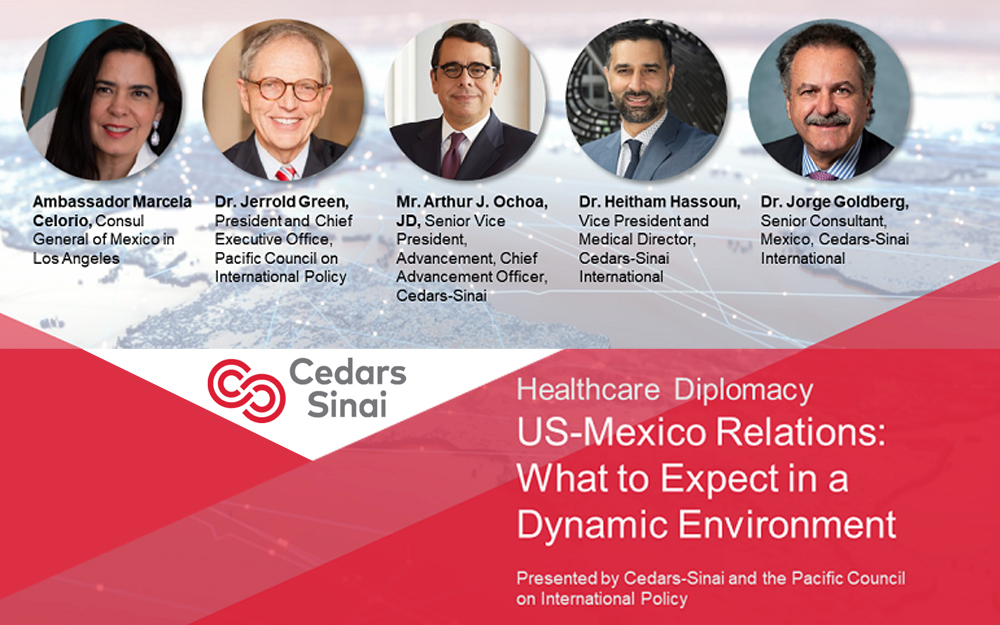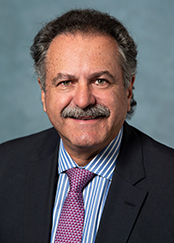International
New Opportunities for U.S.-Mexico Collaboration in Healthcare
Apr 05, 2021 Jasmine Aimaq

The relationship between the U.S. and Mexico is both vibrant and unique, and no place embodies the ties between the two countries as much as Los Angeles.
As part of its new Healthcare Diplomacy Program, Cedars-Sinai held a webinar to discuss expanding that thriving relationship even further. “Amid the pandemic, the importance of medical and technological cooperation has never been more clear,” says Heitham Hassoun, MD, vice president and medical director of Cedars-Sinai International, who hosted the event.
"Mexico City is closer to Los Angeles than Washington D.C.," noted Arthur J. Ochoa, JD, senior vice president of Advancement at Cedars-Sinai, who helped moderate the event.
“We may be in two different countries, but we are one region.”

Jorge Goldberg, MD
Collaboration between Cedars-Sinai and healthcare institutions in Mexico began with the use of telemedicine in 2004. The joint initiative included academic forums, second opinions and virtual consultations, according to Jorge Goldberg, MD, senior consultant for Mexico at Cedars-Sinai International. "We did not know that telemedicine would evolve into what it is today," Dr. Goldberg added, in a nod to the rise in virtual healthcare since the start of the COVID-19 pandemic.
Two topics the panelists discussed were ways to make great healthcare accessible to more people in both countries and cross-border collaboration on vaccines. Medical tourism is a booming industry in Mexico, noted Ambassador Marcela Celorio, consul general of Mexico in Los Angeles, who was also a panelist at the event. While some American patients travel to Mexico, where treatment can be more affordable, the traffic goes in both directions. "At Cedars-Sinai, we welcome many patients from Mexico, particularly for complex problems that may require equipment and expertise for which the medical center is known," said Dr. Hassoun.
In the future, streamlining referral programs and working with insurers to provide cross-border coverage would mean more options—and better outcomes—for patients, he explained.
In Mexico, distribution of the COVID-19 vaccine is handled by the federal government, but there may be ways to engage the private sector to ensure optimal delivery, Celorio noted. Collaboration could also involve a campaign to convince skeptics about the vaccine’s safety and efficacy in Latino populations. In the meantime, Celorio pointed out that the Mexican Consulate in Los Angeles offers a COVID-19 testing site for the city’s large Latino population, where anyone can safely come, regardless of immigration or health insurance status.
"Viruses do not respect borders," said Jerrold Green, PhD, president and CEO of the Pacific Council on International Policy, Cedars-Sinai’s partner in the Healthcare Diplomacy Program. Highlighting the closeness of Mexico and Los Angeles, he added: "We may be in two different countries, but we are one region."
More on the International Patient program at Cedars-Sinai


